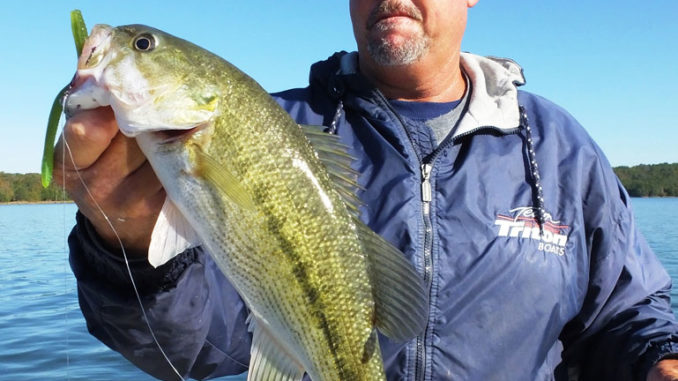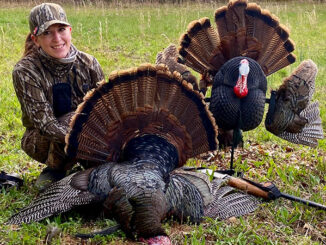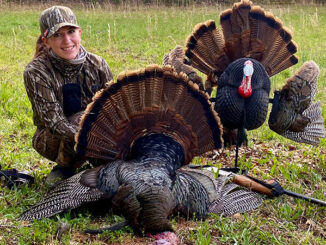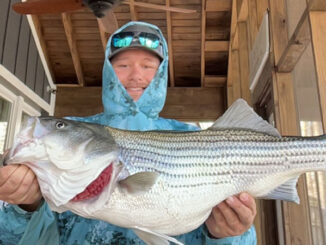
Guide Jerry Kotal said that most of the time, Lake Russell bass will orient to a small, specific target on the bottom, and a school of fish is very concentrated in a small area, but that’s not always the case.
“Occasionally, I’ll graph an area that has plenty of baitfish, maybe several pods of shad, but they’re located over a general area on a hump,” he said. “This can occur any time, but I’ve seen it occur regularly on calm days when shad schools can be practically anywhere, with little or no wind to push them.”
In this situation, Kotal said bass can be marked on the graph, but they’ll be very scattered and holding tight to the bottom, making them difficult to distinguish. But with ample baitfish and some isolated bass marks, he’ll use his electric motor to maneuver above the schools of shad.
Kotal prefers anglers to use different lures until a pattern is determined. If he’s on the lake by himself, he’ll double up and fish two lures at a time.
“One lure I really like is a drop shot rig using a 4-inch finesse worm,” he said. “Not only can I fish it in a regular manner, but when working an area along a ledge or hump for scattered fish, I’ll put the drop shot rig in a rod holder and drag the rig as I maneuver the boat. I’ll also employ a 1/2- to ¾-ounce white Flex spoon and vertically jig the spoon as I search. It’s not unusual at all for a bass to bite the drop-shot rig being pulled, and I can watch that rig while jigging the spoon.
“Often, once I hook a bass on one of the rigs, it seems to super-charge the bass, because suddenly, the graph lights up with frenzied fish activity. Frequently, when I find a good school of bass, I’ll find I’ve got bass hooked on both rigs at once.
“But that’s a problem I look forward to.”




